What does the world look like through an animal’s perspective?
Some animals see colors that humans can only imagine, such as UV rays.
Human vision recognizes three basic colors: red, blue and green, which allows us to see millions of other colors derived from them.
Although many animals have eyes with a wider vision than us, the world through their perspective is completely different.
Below are images showing animals’ perspectives on the world.
Bird 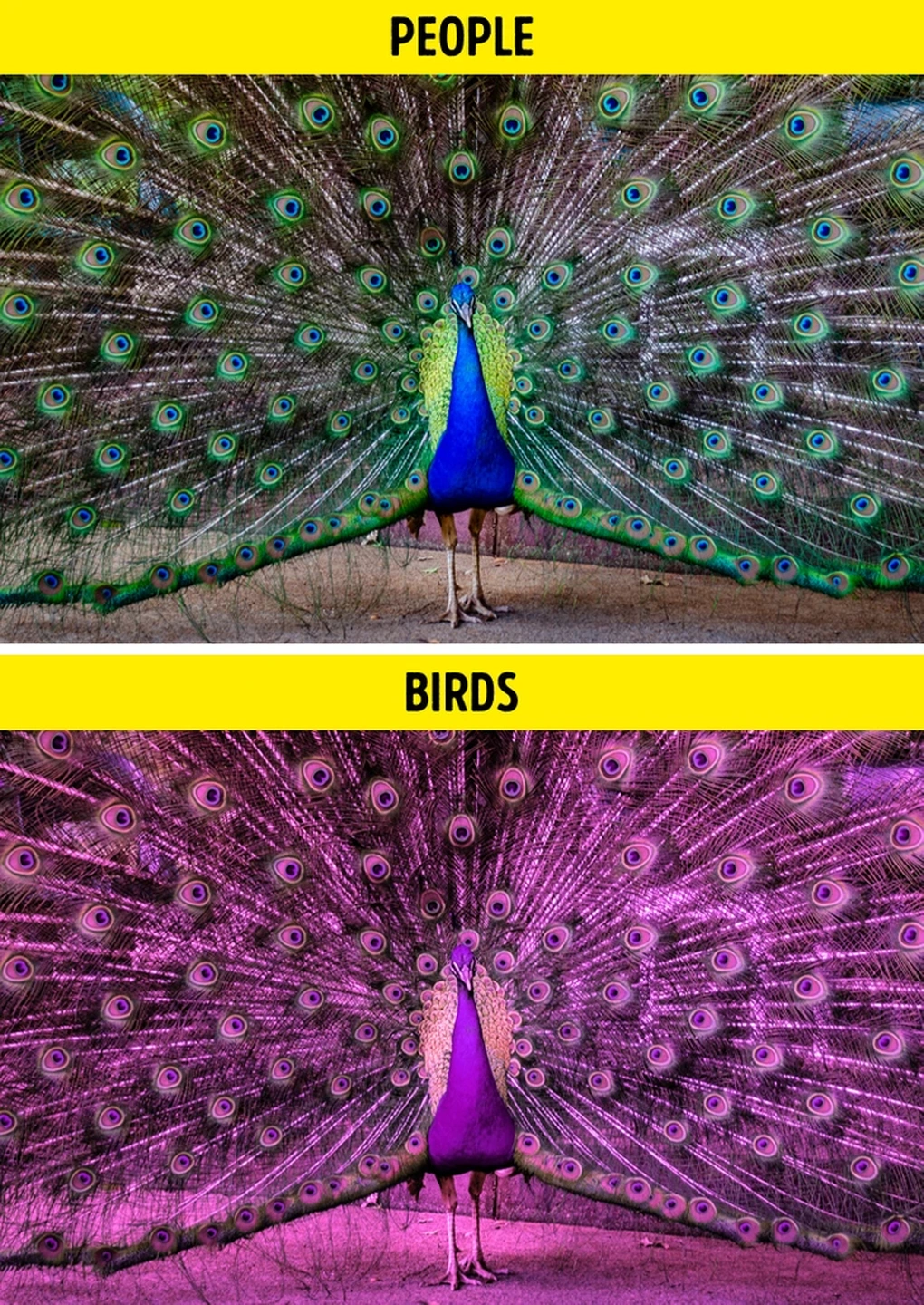
Birds have 4 types of cone cells in their eyes, more than humans (3 cone cells).
This gives them the ability to see more colors than us, especially birds that can see ultraviolet light.
However, not all birds have the same perspective on the world, for example canaries are said to be able to see the color blue, while many other species cannot.
Cat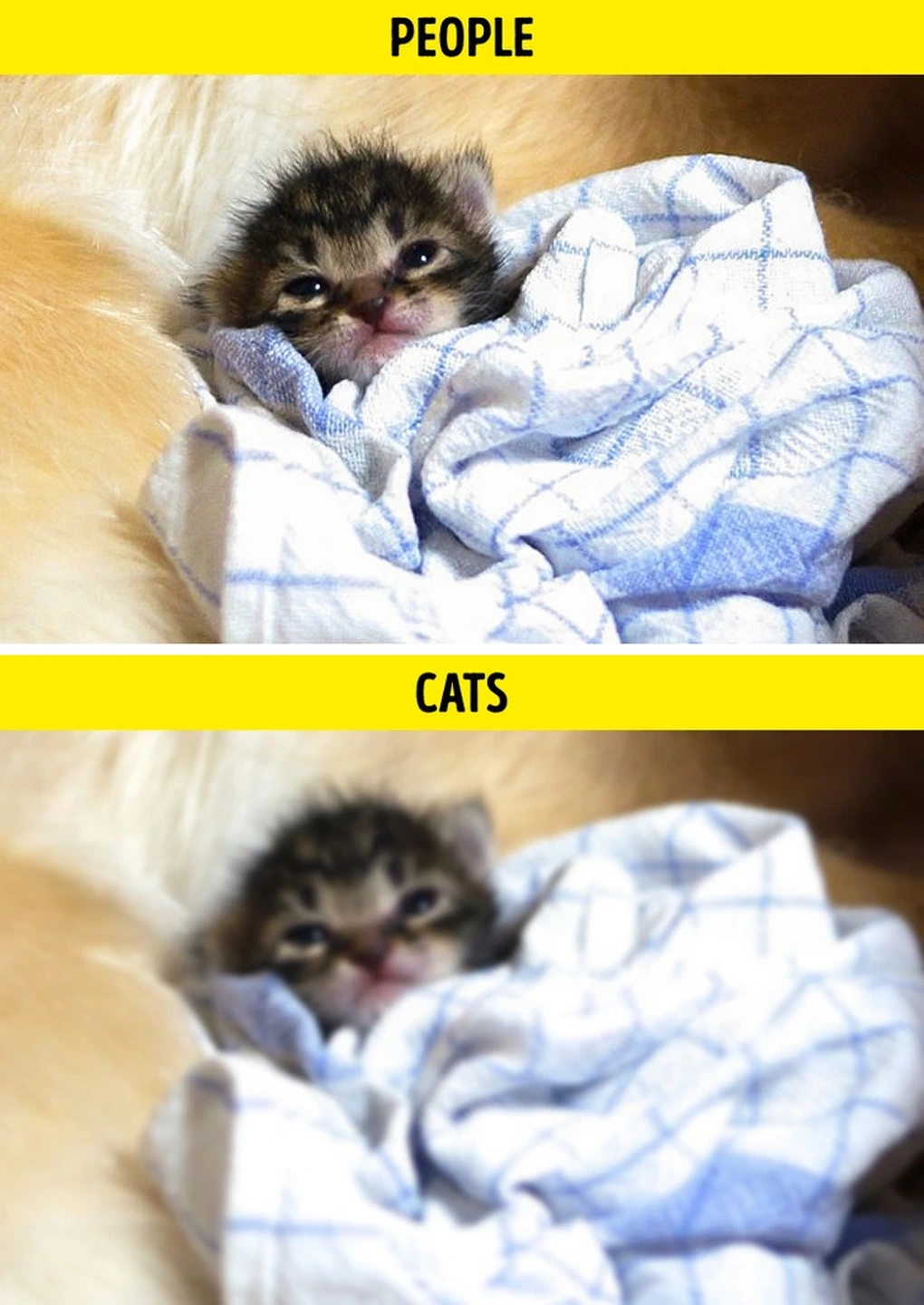
Cats have more rods in their eyes than humans, allowing them to see in low light conditions.
The world through a cat’s eyes looks much dimmer than ours, but in return, cats have a wider visual field. This helps them see more things than humans in the same direction of observation.
Specifically, humans can see 180 degrees around them, this number for cats is 200 degrees.
Mantis shrimp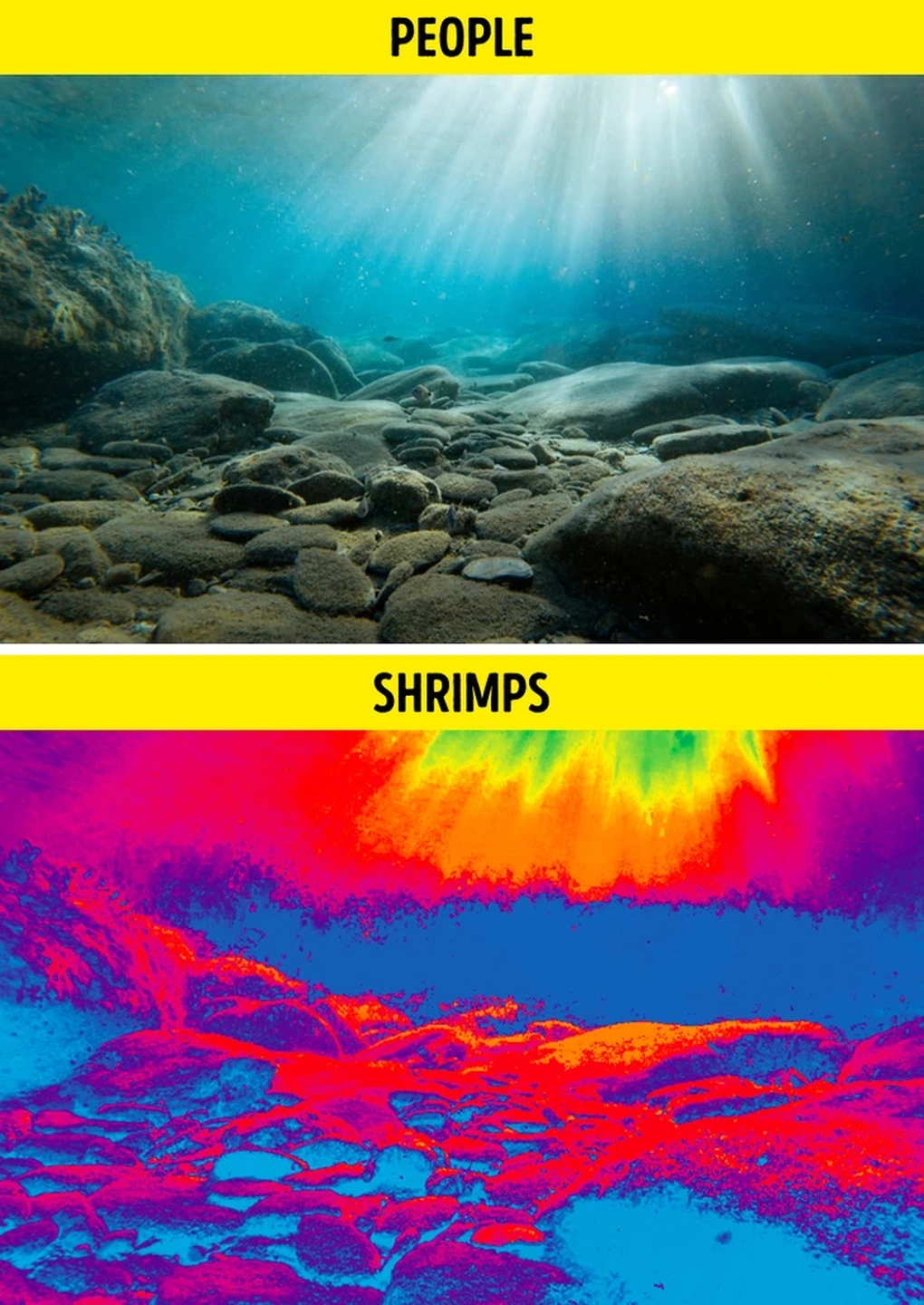
Mantis shrimp possess one of the most complex eyes known to humans: they have up to 16 photoreceptors and filters that help this animal completely recognize ultraviolet rays into individual colors. special.
Goat
If we look closely at a goat, you can notice that they have rectangular pupils.
This allows the animal’s vision to have a better sense of depth.
Besides, goats’ eyes have split pupils, which plays a role in controlling the amount of light they absorb, helping both eyes see more clearly in the dark, especially goats’ eyes are not glared. eyes by sunlight during the day.
Scorpion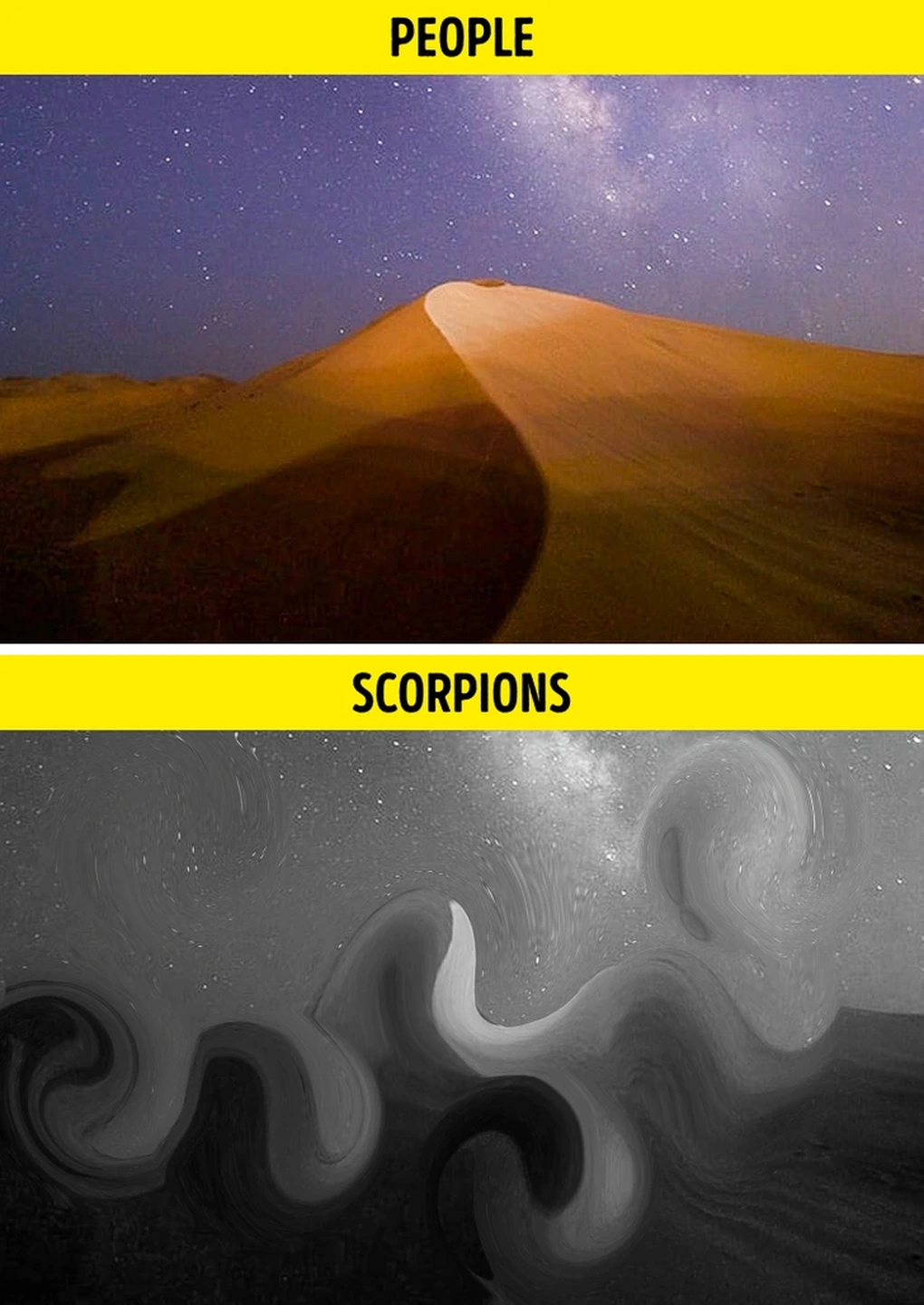
Scorpions usually have 2 eyes in the front, but they can have up to 5 pairs of extra eyes on the side.
Although there are many eyes, their vision seems to only be able to perceive the difference between dark and light, and sometimes only be able to perceive movement.
All scorpion species have different eye structures, many of them have no eyes at all!
Bats

Bats are not truly blind, although they do in fact use their ears to find food.
They see in the dark using their sense of echolocation, but bats’ vision is still active every day to help them interact socially.
Like other animals, many bats are completely color blind while others can see certain colors thanks to proteins in their eyes.
Some of them can even see red, a color that many animals cannot see.
Mouse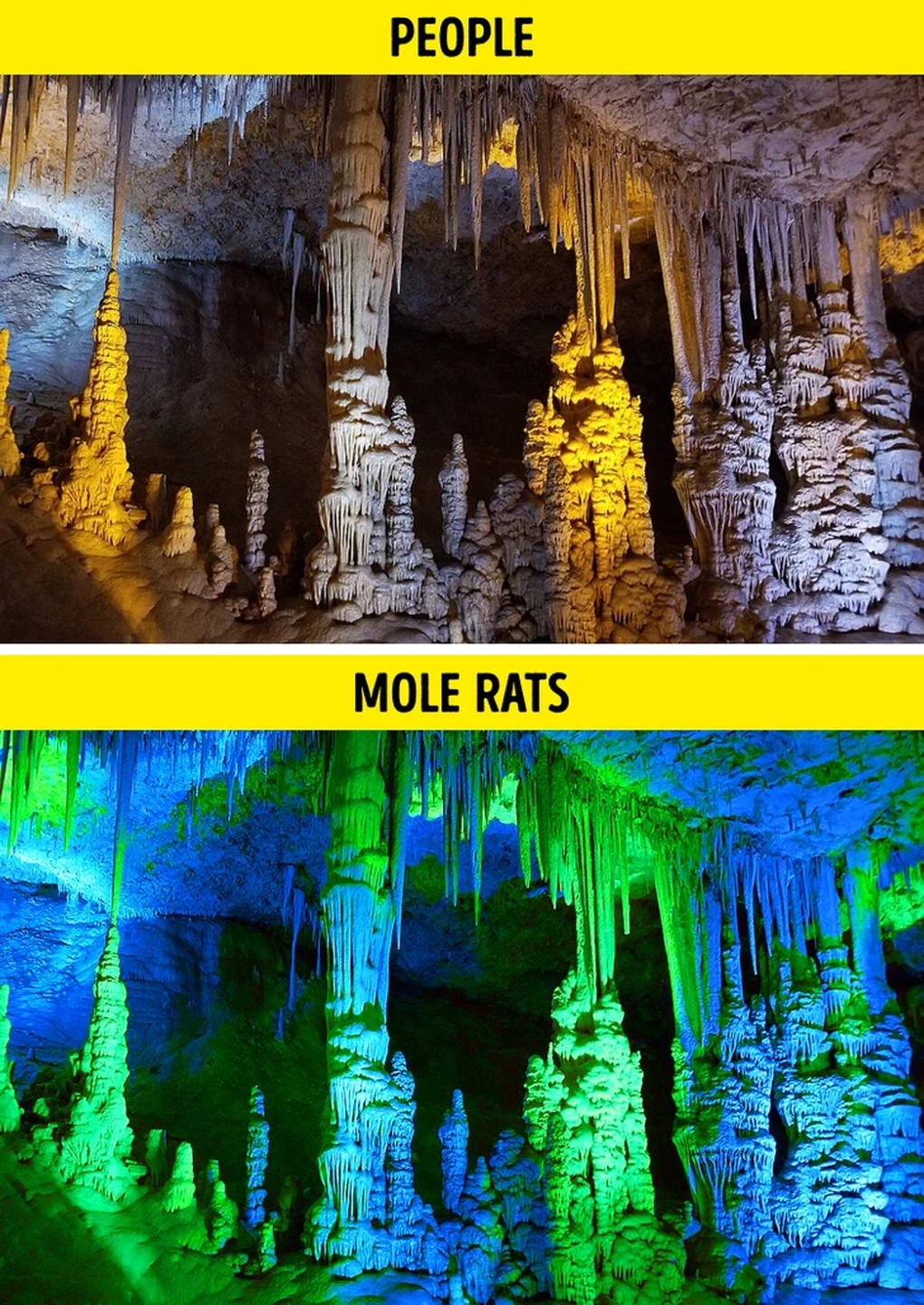
Moles don’t have much use for their eyes because they live underground, but these animals can detect the difference between light and dark.
Most mole rats have very small external eyes, which may allow them to see color. These animals’ eyes are sensitive to blue and yellow-green light, which suggests that mole rats are not actually suffering from color blind.
However, one exception is the blind mole rat, whose eyes are covered by a layer of skin and do not seem to react to light.
Rabbit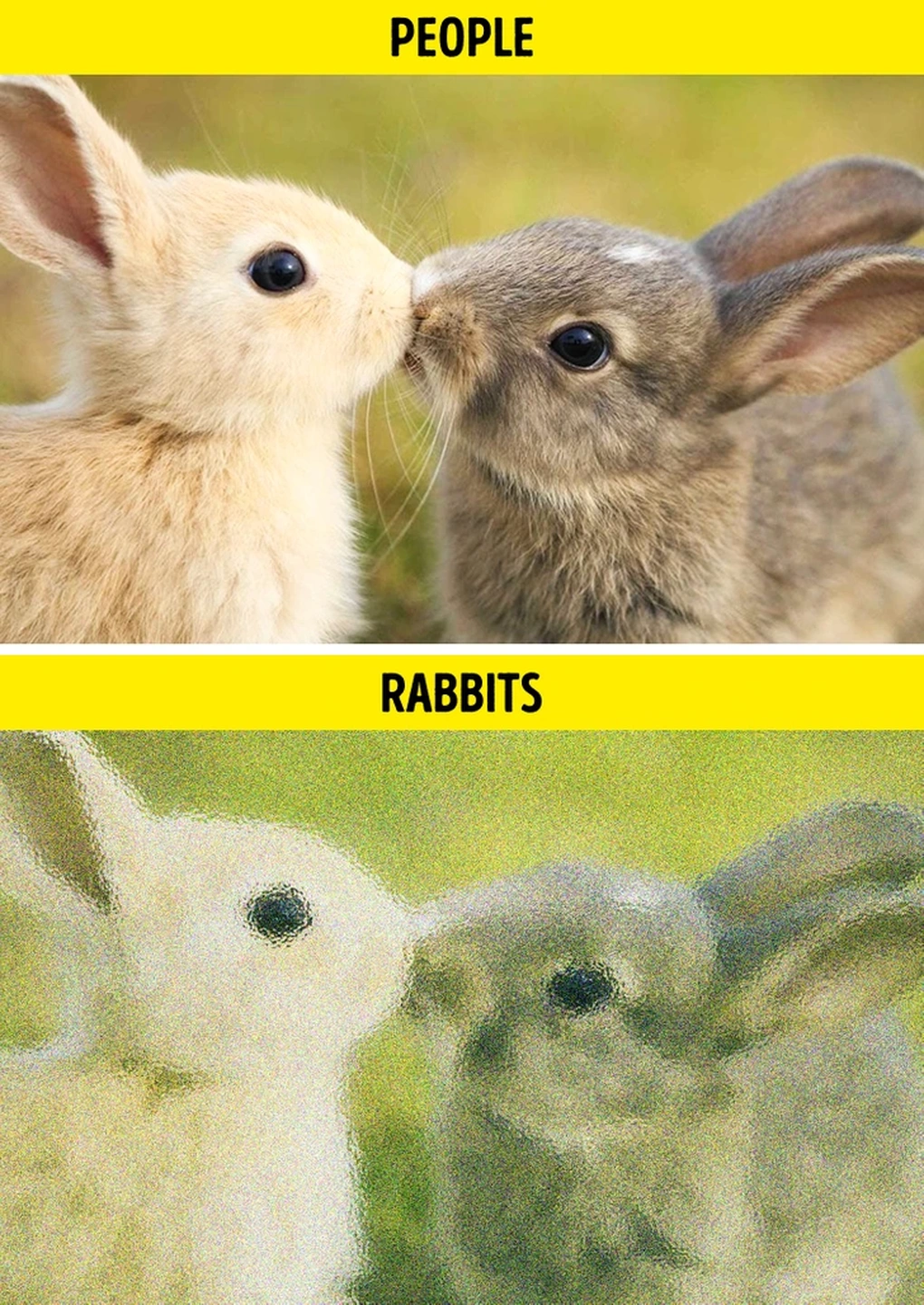
Rabbits cannot see red. Their eyesight has a pupil area like humans, but it is not concave inward, causing this animal’s vision to be blurred.
Besides, because rabbits have eyes on both sides of their heads, they can also see in more directions than humans.
Worms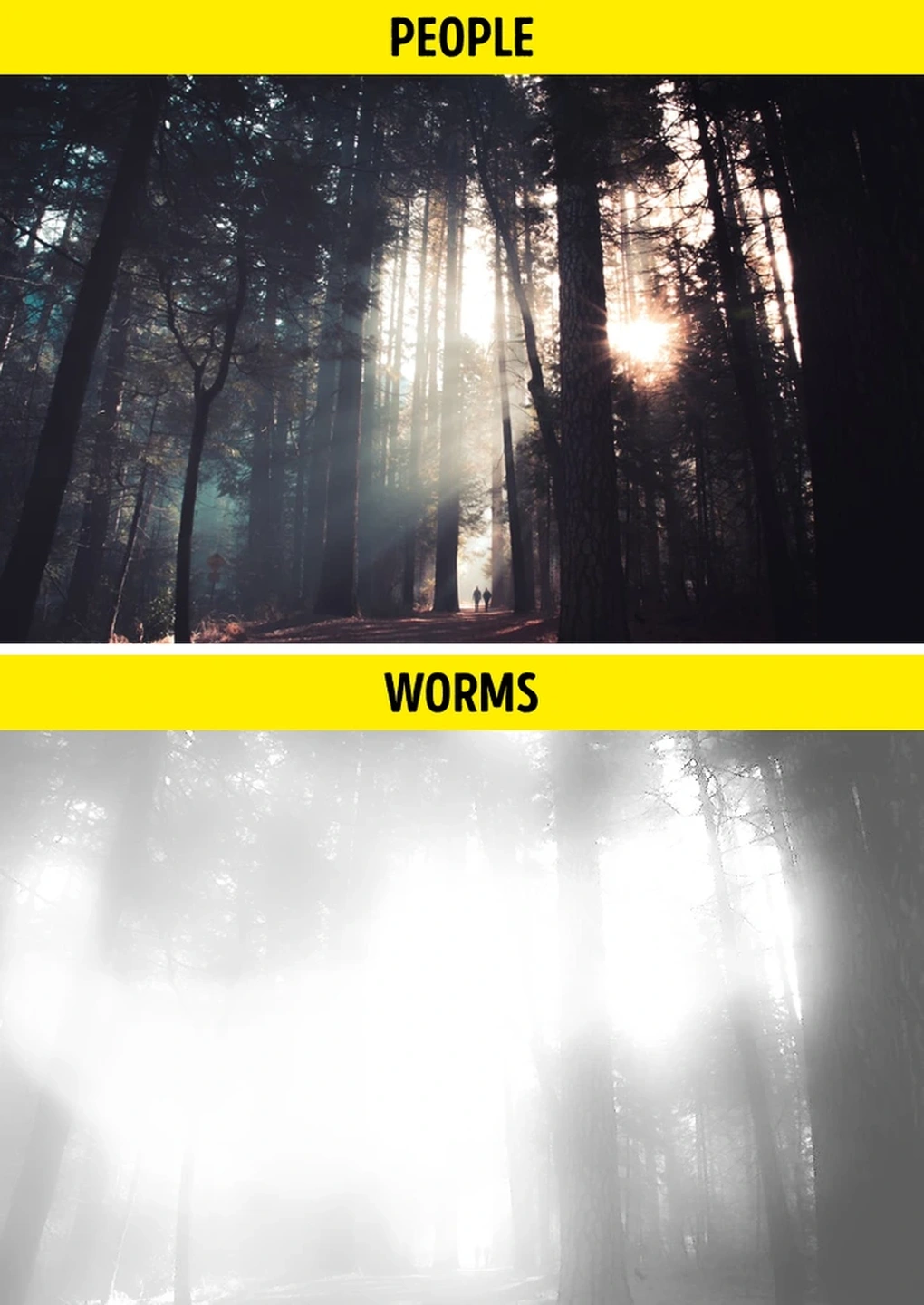
Many worms, especially earthworms, don’t even have eyes, but whether they can “see” or not is very complicated.
This animal’s eyes also have light receptors, allowing them to distinguish between darkness and light.
This makes it possible to perceive environmental differences above and below ground.





